Resources
About Us
Veterinary API Market by Type (Parasiticide [Albendazole, Ivermectin, Moxidectin, Fipronil] Antibiotic [Penicillin, Cephalexin] Anti-inflammatory [Meloxicam, Carprofen, Deracoxib] Vaccine) Synthesis (Chemical, Biological, HPAPI) – Global Forecast to 2032
Report ID: MRHC - 104940 Pages: 225 Jan-2025 Formats*: PDF Category: Healthcare Delivery: 24 to 72 Hours Download Free Sample ReportVeterinary active pharmaceutical ingredients (APIs) are integral to the animal pharmaceutical industry as they are needed to manufacture finished veterinary drugs or formulations to treat and prevent diseases and disorders in animals. The growth of the veterinary API market is driven by the growing expenditure on animal health, the rising prevalence of animal, foodborne, and zoonotic diseases, and the growing demand for animal-derived food products globally. Additionally, increasing awareness regarding animal health in emerging economies and the growing application of precision medicine in veterinary care are expected to create growth opportunities for the stakeholders in this market. However, the stringent regulatory approval process restrains the growth of this market. The environmental impact of veterinary drugs and the dearth of veterinary practitioners is a major challenge to market growth.
The demand for animal-derived food products, namely meat, milk, and eggs, has increased. The consumption of animal-derived foods is increasing due to decreasing agricultural productivity due to shrinking resources and reduced availability of cultivable land. Food products derived from animals are a major source of protein, and a protein-rich diet is essential to leading a healthy life.
Consumption of animal proteins is stable (around 44 to 55 g/capita/day) in developed countries, while consumption is increasing in developing countries. For instance, in 2020, the U.S. accounted for approximately 21% of global beef consumption. In 2020, beef and veal consumption in Asia reached 19,656.46 thousand tons and is expected to increase to 21,467.08 thousand tons by 2026 (Source: OECD FAO). Farmers are expected to increase livestock production to meet the increasing demand for animal-derived foods. Increased livestock production will encourage the adoption of pharmaceuticals for animals. Several animal pharmaceuticals are used for their overall health, such as vaccines, parasiticides, and medicines for other diseases and conditions to prevent the spread of disease and improve animal health. This is one of the major factors driving the market growth.
The increasing number of livestock/farm animals poses a higher risk of diseases and infections that can cross the species barrier and be passed on to humans through direct contact or the consumption of livestock products. Over the last century, there has been an alarming increase in the number, frequency, and diversity of zoonotic disease outbreaks. Caused by the spillover of pathogens from animal hosts to people, these events may have more than tripled in the last decade, with the number of new zoonotic diseases infecting people quadrupling over the same period.
Over 150 zoonotic diseases can be transmitted to humans by wild and domestic animal populations, 13 of which are responsible for 2.2 million deaths per year. Viruses, bacteria, parasites, and fungi cause zoonotic diseases. These germs can cause many illnesses in people and animals, ranging from mild to serious illnesses and even death. Depending on the disease, animals can sometimes appear healthy, even when carrying pathogens that can make people sick.
Furthermore, although pet animals are considered a part of the family, they can be carriers of diseases that infect humans. Diseases transmitted from animals to humans mainly spread through vectors, such as flies, ticks, fleas, and mosquitoes. Therefore, pet owners are growing increasingly concerned regarding the health and well-being of their companion animals, driving the adoption of medicines and drugs required for their well-being. Therefore, the growing prevalence of diseases in animals and the high risk of zoonotic diseases leads to adopting appropriate veterinary drugs to curb the spread of these diseases. This is expected to generate a demand for veterinary APIs for manufacturing these drugs, driving the market globally.
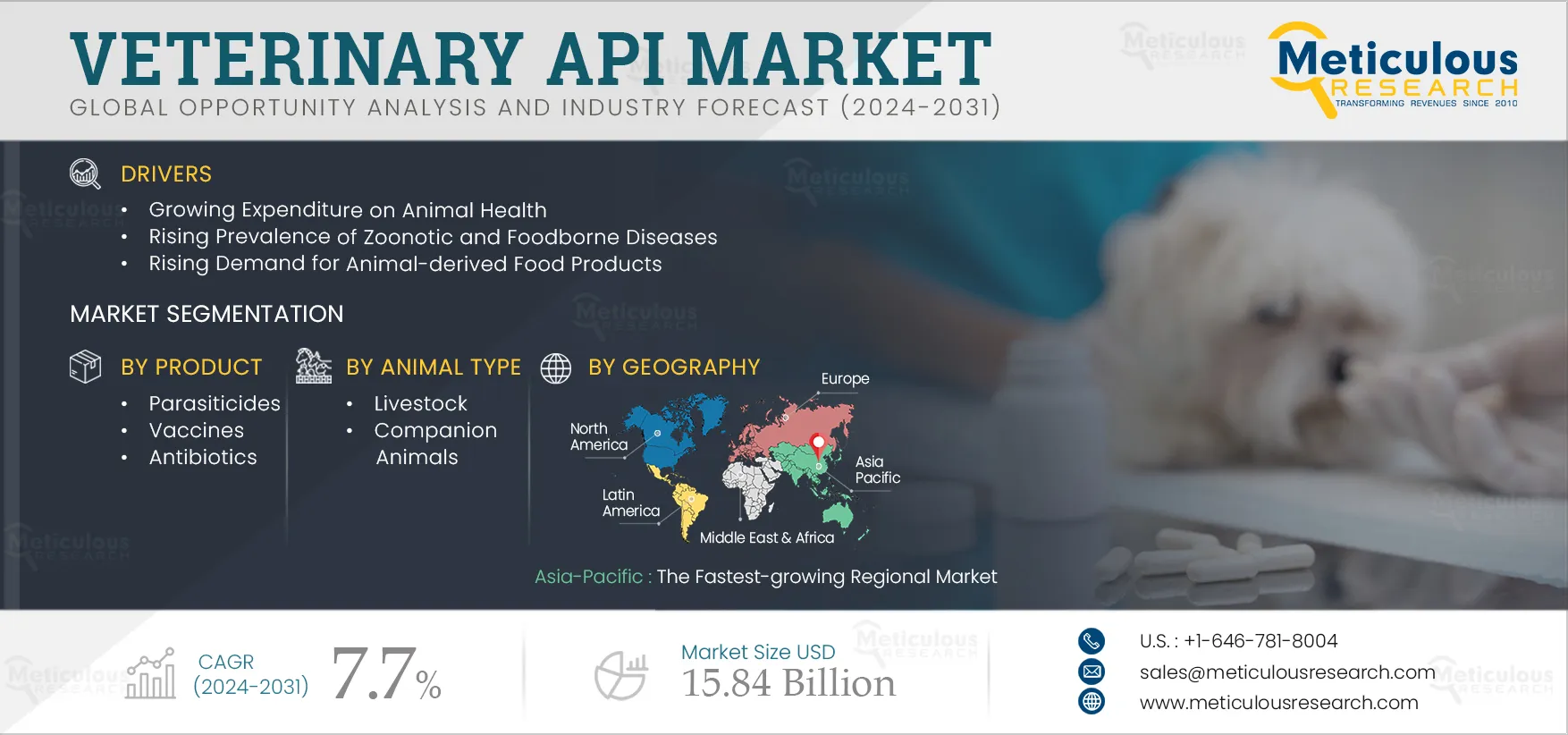
Click here to: Get Free Sample Pages of this Report
Parasiticides such as ectoparasiticides, endoparasiticides, and endectocides are used against the infections of parasitic organisms, including tapeworms, hookworms, roundworms, mites, fleas, ticks, flukes, and other parasites. Companion animals, as well as farm animals, are very commonly affected by these parasites. Therefore, it becomes crucial to administer the parasiticides at regular intervals to keep the animal healthy and disease-free, supporting a large share of the segment. Moreover, factors such as the increasing prevalence of zoonotic diseases, growing demand for animal-derived food products, and increasing number of livestock in emerging economies also support the large share of the segment.
The factors attributed to the segment’s large share are control & precision, scale-up, cost efficiency, and consistency of the chemical API synthesis method. Chemical synthesis methods can be efficient and cost-effective for producing large quantities of APIs. Once the route for the synthesis of a compound is set, the manufacturers can scale up the production process, which helps the manufacturers reduce the production costs, leading to higher profit margins. This cannot be achieved for biologically synthesized APIs as they require specific methodologies and techniques to obtain the desired molecule.
Based on animal type, the veterinary API market is segmented into companion animals and livestock. In 2025, the companion animals segment is expected to account for the largest share of the veterinary API market. People need a companion for emotional well-being, and pets offer a positive environment at home. There is a common trend of owning a pet amongst people globally. According to Animal Medicines Australia, pet ownership in Australia increased to 69% of households having pets in 2021 from 61% in 2019. This increase led to a rise in pet-related expenditures & adoption of pet insurance in Australia. For instance, the average household insurance expenditure for dogs in Australia increased from USD 147 in 2019 to USD 246 in 2021. Similarly, the percentage of households who owned dog pets in the U.K. accounted for 31% of the total households (Source: World Animal Foundation). Additionally, in 2022, the total number of pets in Brazil accounted for 167.6 million (Source: ABINPET).
In 2024, North America is expected to dominate the veterinary API market, while Asia-Pacific is expected to record the highest CAGR of 8.3% during the forecast period. The high growth of the Asia-Pacific veterinary API market is attributed to the growing population of pet animals, growing demand and consumption of animal-derived food proteins, presence of large exporters of animal products, government initiatives to improve agricultural and animal husbandry outcomes, and the rising incidence of various zoonotic diseases in the region.
The report offers a competitive landscape based on an extensive assessment of the product portfolio offerings, geographic presence, and key strategic developments adopted by leading market players in the last three to four years. The key players profiled in the veterinary API market are Alivira Animal Health Limited (India), Excel Industries Ltd. (India), Suan Farma, S.A.U. (Spain), Chr. Olesen (Denmark), Qilu Pharmaceutical Co., Ltd. (China), FIS - Fabbrica Italiana Sintetici S.p.A. (Italy), Rochem International Inc. (U.S.), NGL Fine-Chem Ltd. (India), MENADIONA S.L (Spain), and Chempro Pharma Private Limited. (India).
|
Particular |
Details |
|
Page No |
~225 |
|
Format |
|
|
Forecast Period |
2025-2032 |
|
Base Year |
2024 |
|
CAGR |
7.7% |
|
Market Size (Value) |
$15.84 billion by 2032 |
|
Segments Covered |
By Product
By Synthesis Type
By Animal Type
|
|
Countries/Regions Covered |
North America (U.S. and Canada), Europe (Germany, France, U.K., Spain, Italy, Switzerland, and Rest of Europe), Asia-Pacific (China, Japan, India, Australia, South Korea, and Rest of APAC), Latin America (Brazil, Mexico, and Rest of LATAM), Middle East & Africa (Saudi Arabia, UAE, and South Africa) |
|
Key Companies |
Alivira Animal Health Limited (India), Excel Industries Ltd. (India), Suan Farma, S.A.U. (Spain), Chr. Olesen (Denmark), Qilu Pharmaceutical Co., Ltd. (China), FIS - Fabbrica Italiana Sintetici S.p.A. (Italy), Rochem International Inc. (U.S.), NGL Fine-Chem Ltd. (India), MENADIONA S.L (Spain), and Chempro Pharma Private Limited. (India). |
The veterinary API market report covers market sizes & forecasts for parasiticides, vaccines, antibiotics, anti-inflammatories, and other APIs. The veterinary API market study includes the value analysis of various segments and subsegments of the veterinary API market at the regional and country levels. Additionally, regulatory analysis, pipeline analysis, PESTEL analysis, and trends are provided for the veterinary API market. The report also provides a competitive landscape for the players operating in the market.
The veterinary API market is projected to reach $15.84 billion by 2032, at a CAGR of 7.7% from 2025 to 2032.
The parasiticides segment is estimated to account for the largest share of the veterinary API market in 2025.
Based on animal type, the companion animals segment is projected to gain more traction in the veterinary API market.
The high growth of the veterinary API market is mainly attributed to the growing expenditure on animal health, the rising prevalence of animal, foodborne, and zoonotic diseases, and the growing demand for animal-derived food products globally. Additionally, increasing awareness regarding animal health in emerging economies and the growing application of precision medicine in veterinary care are expected to create growth opportunities for the stakeholders in this market.
The key players operating in the veterinary API market are Alivira Animal Health Limited (India), Excel Industries Ltd. (India), Suan Farma, S.A.U. (Spain), Chr. Olesen (Denmark), Qilu Pharmaceutical Co., Ltd. (China), FIS - Fabbrica Italiana Sintetici S.p.A. (Italy), Rochem International Inc. (U.S.), NGL Fine-Chem Ltd. (India), MENADIONA S.L (Spain), and Chempro Pharma Private Limited. (India).
The emerging Asian-Pacific countries are expected to offer significant growth opportunities for the vendors in this market due to the growing population of pet animals, growing demand and consummation of animal-derived food proteins, presence of large exporters of animal products, government initiatives to improve agricultural and animal husbandry outcomes, and the rising incidence of various zoonotic diseases in the region.



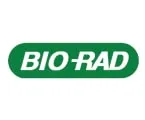
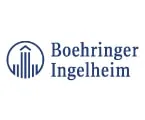

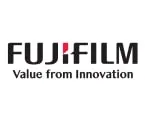

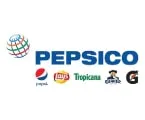



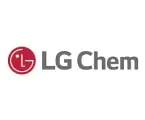
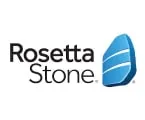

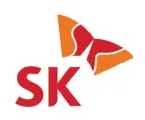
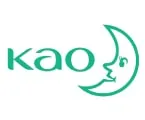

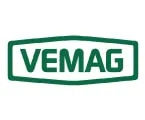
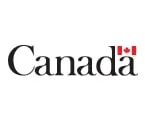
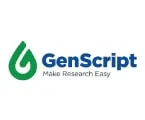
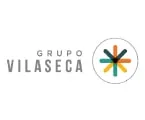


Published Date: Jan-2025
Published Date: Jan-2025
Published Date: Jun-2022
Please enter your corporate email id here to view sample report.
Subscribe to get the latest industry updates